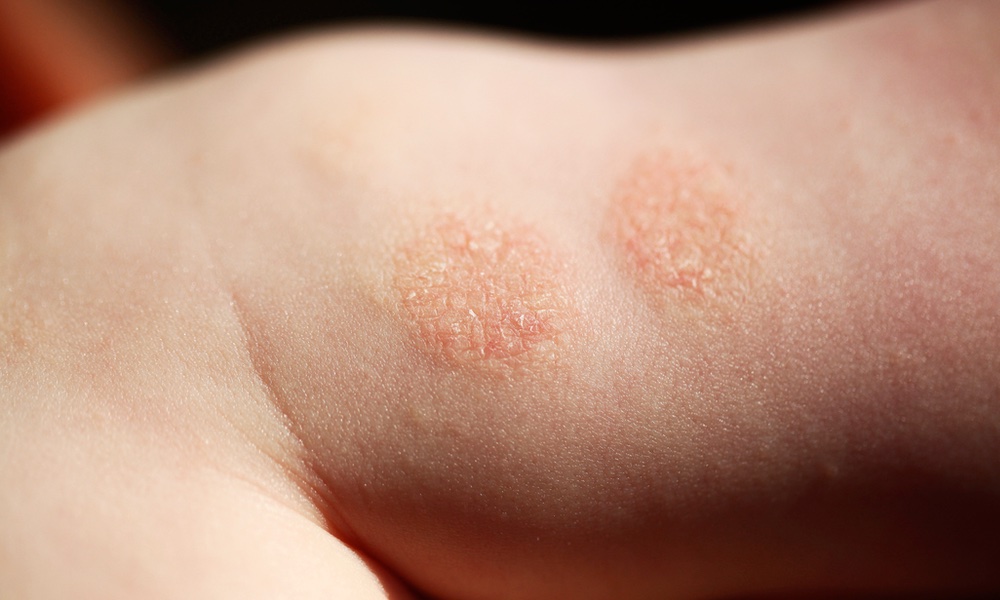If you’re a parent dealing with your baby’s atopic dermatitis (more commonly known as eczema), you might be feeling anxious, but you’re certainly not alone. The condition affects up to 25 percent of children, and an estimated 60 percent of adults with eczema developed it during the first year of life.
There’s no cure, but that doesn’t mean you need to stress out about your baby’s skin. If you treat it early in your infant’s life, you may be able to help prevent further discomfort or complications. Most cases can be controlled with a customized skin care plan. Depending on what your doctor recommends, treatment might include moisturizers and prescription medications.
An article published in CMAJ, the Canadian Medical Association Journal should help parents sort through their concerns. “We hope these five key messages for general and specialist care providers, as well as caregivers, promote best practices for managing atopic dermatitis in infants,” Derek Chu, assistant professor at the Division of Allergy and Immunology at McMaster University, said in astatement. “Atopic dermatitis affects more than just the skin and it impacts on the whole family, so optimally managing atopic dermatitis at this critical stage in an infant’s development is important.”An estimated 60 percent of adults with eczema developed it during the first year of their life.
1) Where is eczema mostly seen?
Atopic dermatitis is most common on the cheeks, outer limbs and trunk in infants; classic eczema which affects behind the knees and in the elbow creases many not develop until later in childhood.
2) What’s the best moisturizer to use?
The best moisturizer is that one that caregivers will use on their baby. It doesn’t have to be fancy or expensive. In fact, new evidence shows that any type of non-fragrant moisturizer — lotion, cream, gel or ointment — used at least twice daily helps with managing atopic dermatitis.
3) Will my baby need medication?The American Academy of Dermatology recommends paying special attention to how you bathe your baby.
Since atopic dermatitis is an inflammatory condition, it might require anti-inflammatory treatment. With that in mind, there are further guidelines:
4) Does my baby need antibiotics if there’s a secondary bacterial infection?
5) Should we try to eliminate any foods that might act as triggers?
Not really. Restricting foods or encouraging food avoidance may not improve eczema and may increase the risk of food allergies.
The American Academy of Dermatology recommends paying special attention to how you bathe your baby. It suggests you use lukewarm water, wash gently with fragrance-free cleanser, avoid scrubbing the baby’s skin and limit the bath to five to 10 minutes. Immediately following the bath, apply a fragrance-free moisturizer.
One more important point to keep in mind: If you notice an infection on your baby’s skin, such as pus-filled blisters, sores or yellowish-orange crusts on the skin, or if you have any questions about how to take care of your baby’s eczema, make an appointment to see a board-certified dermatologist. Most doctors will list their credentials and certification on their website. You can also find a list of board-certified dermatologists at the American Academy of Dermatology Association’s website: www.aad.org.





